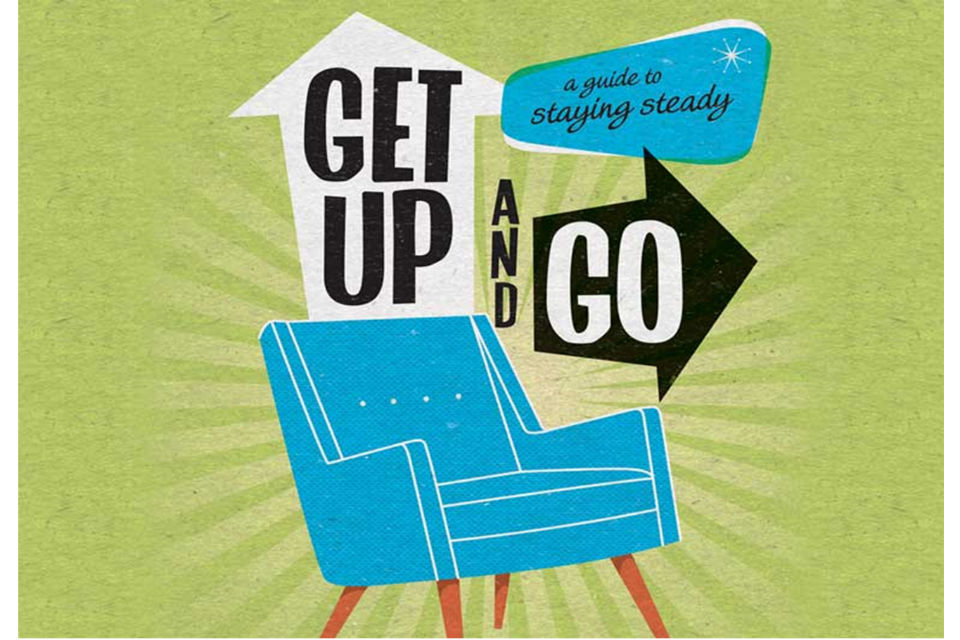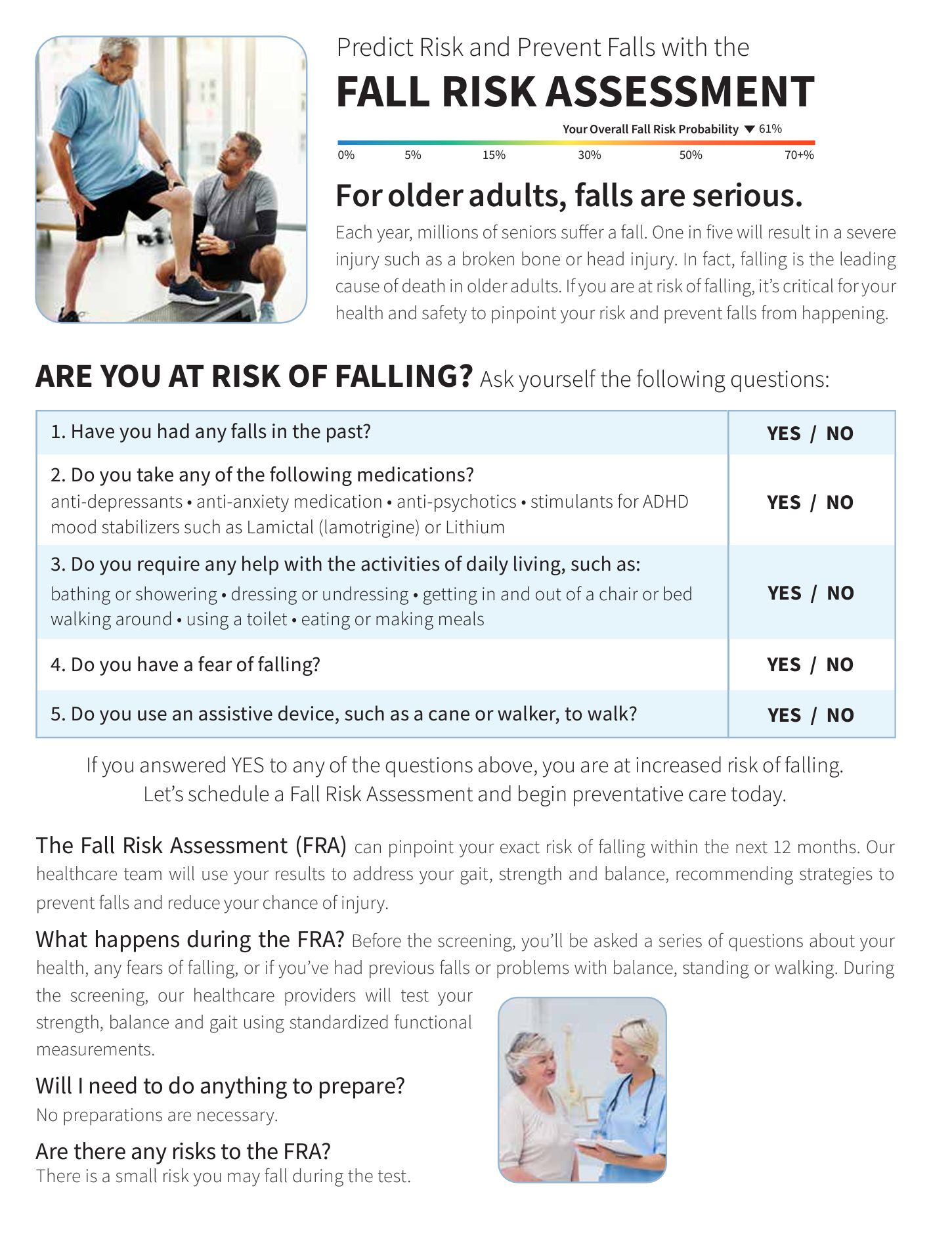Dementia Fall Risk Things To Know Before You Buy
Table of ContentsThe Definitive Guide for Dementia Fall RiskSome Known Details About Dementia Fall Risk 7 Easy Facts About Dementia Fall Risk ExplainedSome Of Dementia Fall RiskFascination About Dementia Fall Risk
Make sure that there is a designated area in your medical charting system where personnel can document/reference scores and document appropriate notes related to drop avoidance. The Johns Hopkins Fall Threat Evaluation Device is one of lots of tools your team can utilize to help stop unfavorable clinical events.Individual falls in healthcare facilities are common and devastating unfavorable occasions that persist in spite of decades of initiative to lessen them. Improving interaction across the assessing nurse, treatment group, client, and client's most included friends and household might reinforce autumn avoidance efforts. A group at Brigham and Female's Hospital in Boston, Massachusetts, looked for to develop a standardized autumn avoidance program that focused around improved interaction and individual and household involvement.

The advancement group emphasized that successful execution depends on client and staff buy-in, integration of the program right into existing operations, and fidelity to program procedures. The group kept in mind that they are grappling with how to make certain continuity in program application throughout durations of crisis. During the COVID-19 pandemic, for instance, a boost in inpatient drops was connected with limitations in client involvement along with restrictions on visitation.
The Greatest Guide To Dementia Fall Risk
These cases are typically considered avoidable. To implement the intervention, organizations need the following: Accessibility to Loss pointers sources Fall TIPS training and retraining for nursing and non-nursing team, consisting of brand-new nurses Nursing workflows that permit individual and family members involvement to carry out the falls assessment, make certain use the prevention plan, and perform patient-level audits.
The outcomes can be extremely detrimental, frequently accelerating patient decrease and creating longer health center remains. One study approximated remains raised an added 12 in-patient days after a person autumn. The Fall TIPS Program is based upon engaging people and their family/loved ones throughout 3 major processes: analysis, personalized preventative interventions, and bookkeeping to guarantee that patients are taken part in the three-step loss prevention procedure.
The patient analysis is based on the Morse Loss Scale, which is a confirmed fall threat assessment device for in-patient health center settings. The range includes the 6 most usual reasons patients in hospitals drop: the patient autumn background, high-risk problems (including polypharmacy), use IVs and various other outside tools, mental condition, stride, and mobility.
Each danger factor relate to several actionable evidence-based interventions. The registered nurse creates a strategy that includes the interventions and is visible to the treatment group, patient, and household on a laminated additional hints poster or published aesthetic aid. Nurses establish the strategy while meeting with the client and the individual's family.
Excitement About Dementia Fall Risk
The poster serves as a communication tool with other participants of the individual's treatment team. Dementia Fall Risk. The audit component of the program consists of examining the individual's expertise of their threat factors and avoidance plan at the unit and healthcare facility degrees. Nurse champs carry out at the very least 5 specific meetings a month with individuals and websites their households to look for understanding of the autumn prevention plan

An approximated 30% of these drops lead to injuries, which can range in extent. Unlike various other unfavorable events that call for a standard scientific reaction, fall avoidance depends highly on the needs of the individual. Including the input of individuals that understand the patient ideal enables for greater customization. This strategy has confirmed to be extra efficient than fall avoidance programs that are based mainly on the manufacturing of a danger rating and/or are not customizable.
Dementia Fall Risk - Questions

Based upon auditing results, one website had 86% compliance and 2 websites had over 95% compliance. A cost-benefit evaluation of the Loss TIPS program in eight hospitals approximated that the program price $0.88 per person to execute and caused savings of $8,500 per 1000 patient-days in direct expenses associated with the avoidance of 567 falls over three years and eight months.
According to the innovation team, organizations curious about applying the program should conduct a readiness evaluation and falls avoidance voids evaluation. 8 Additionally, organizations should guarantee the required facilities and process for application and create an application plan. If one exists, the organization's Fall Prevention Task Pressure should be included in preparation.
Excitement About Dementia Fall Risk
To begin, companies need to ensure completion of training components by registered nurses and nursing assistants - Dementia Fall Risk. Healthcare facility personnel should analyze, based upon the demands of a hospital, her response whether to make use of an electronic wellness record hard copy or paper version of the loss prevention strategy. Applying teams should hire and educate registered nurse champions and develop processes for bookkeeping and reporting on loss data
Team need to be included in the procedure of revamping the workflow to involve patients and family members in the assessment and avoidance plan procedure. Solution needs to be in area to ensure that devices can comprehend why a loss occurred and remediate the cause. Much more especially, nurses must have channels to supply recurring feedback to both personnel and unit leadership so they can readjust and improve autumn avoidance workflows and interact systemic troubles.